|
By Brian Millard As somewhat of a science-nerd I find it fascinating to be living during a global science experiment. Quite often we are looking to see if there is a cause-and-effect situation going on and not just random events. Well, the scientific community has come to a resounding consensus that human activities (burning fossil fuels, over-fishing, pollution, etc.) are causing global biodiversity loss. If you are able to read this article right now, I would like to formally welcome you to the Holocene Extinction. Also known as the Sixth Mass Extinction. Now there is no need to raise an alarm and start stocking up on bottled water and cans of tuna, because this extinction event has been going on for the last 9,000 – 13,000 years! Hold on! If this mass extinction has been going on for 13,000 years, how is it possible that humans have had that big of an effect? True. Unfortunately there was no CNN or Buzzfeed back then to say for sure what caused the extinction so long ago. Some think that following the last Ice Age, certain species couldn’t adapt fast enough as the environment changed. Others believe that these early extinctions were caused by the proliferation of modern humans. Regardless of the distant past, it is glaringly obvious that modern humans have been the cause of modern extinction. It is hard for me to think of one activity I do in a day that isn’t directly, or indirectly, linked to biodiversity loss. The Holocene Extinction event has affected every major group of plants and animals on land and in water. The trickiest part is estimating the current rate of extinction. Especially when you consider that we share Earth with an estimated 8.7 million different species of plants and animals, and have yet to name 88.5% of them. There are a couple of estimates for our current extinction rate. Stuart Pimm, a theoretical ecologist, stated that the current extinction rate of plants is 100 times higher than pre-human rates. A study published in 2014 in Conservation Biology claims that our current extinction rate is 1,000 times more than the natural background rates. Long story short, we are losing more species of plants and animals than we are gaining new species. Mass extinction isn’t a new phenomena to our planet. The fact remains that this extinction is occurring because of a certain species of animal and within such a short ecological time frame. Itis something that is both terrifying and fascinating. This blog is also posted on Earth Unfiltered.
1 Comment
By Jenna Siu When I tell people I did my master’s working with butterflies I get a lot of different reactions. Among fellow biologists, there is a certain appreciation for a study species even if it may not be their species of choice. However, among the general public it is a different story. "Butterflies, are they even animals?" Butterflies are indeed animals and there are tons of reasons why butterflies make great study organisms. They are relatively easy to catch and handle, and mostly easy to observe. Plus, butterflies are relatively short lived, which makes it easy to study them over many generations. Because of this, a number of butterfly populations around the world have been monitored for decades, resulting in work that has made major contributions to our understanding of population dynamics and conservation. Part of my project was to assess the Eastern Tiger and the Spicebush Swallowtails’ movement relative to forest edges in the fragmented landscape of southern Ontario. Did they move towards it, avoid it, or a bit of both? To learn about this we caught butterflies and released them at different distances from the edge and followed them using a GPS unit to record their movement. Working on butterflies had a few benefits. They come out when it’s sunny and are active during the day. Swallowtails are some of the largest butterflies in Ontario, so they take longer to warm up. I didn’t expect to see many out before 10 am or after 5 pm. On a typical day, I rolled out of bed around 8:30 am, ate breakfast and prepared my lunch. Eventually my field assistant would follow, we would pack the car and be on the road at 9:30 am. We would pack butterfly nets, a cooler with ice packs and a towel, many glassine envelopes, a permanent marker, GPS unit, field guides, lots of sunscreen and water. After arriving at a site, we would walk around with our nets, sometimes up and down a road, through fields or along the forest edge looking for swallowtails. People often say to me, “I picture you frolicking in the fields catching butterflies.” Clearly, they have never gone butterfly catching before. Catching butterflies is anything but graceful. In fact, some advice I was given before heading to the field was, “if you don’t look silly doing it, you’re not doing it right.” Truer words have never been spoken. Swallowtails are very strong fliers; they can fly high and fast. I couldn’t count the number of times a swallowtail has out flown me or made me run in circles. I have chased after falling leaves, fallen on my face, gotten scrapes and bruises, gone through poison ivy and swarms of deer flies and mosquitoes all to get one more sample. Through many failed attempts, I quickly learned the tricks of the trade. It is much easier to sneak up on swallowtails while they are on a flower feeding on nectar. However if you miss, you have about a 30 second window to redeem yourself; otherwise it will likely out fly you. You can also catch them mid-flight or chase after them, but trust me, it is much harder. By mid-field season, my field assistant and I were pro butterfly catchers, catching well over 600 throughout the summer! Once a butterfly was caught, we would carefully take it out of the net, put it in a glassine envelope and in the cooler. Butterflies are ectothermic, meaning their surroundings determine their body temperature. So, putting them in a cooler does minimal harm – as long as it’s not too cold! There are a lot of myths about touching a butterfly’s wings and people always ask how safe it is for the insect. Their wings are covered in a powder like substance that is actually tiny scales. This is what gives them their bright colours and patterns. Lepidoptera, the scientific order they belong to, means ‘scaly wings’. As butterflies age, they lose their scales naturally. Although, you don’t want to handle them too much causing them to lose scales faster, it is very safe to hold them by pinching the wings together just behind the head – the strongest part of their wing. After a few butterflies were caught, we would bring them to the release site. For each butterfly release, we would take a butterfly from the cooler, sex it and give it a unique ID in case we caught it again. To mark butterflies we simply used a permanent marker to write on their wings. For Eastern Tigers, which are mainly yellow, it was easy to write a number on their underwing. For the Spicebush however, they are mainly black. They have six orange spots on their underwings that we marked in unique patterns. After recording this information, we would put the butterfly on the ground, wait for it to take off and follow it using flags and a GPS unit, doing our best not to influence its flight. We did this repeatedly throughout the day. When 5 pm rolled around and few butterflies were to be found, we headed back to the field station to make dinner ending the day with a few beers around the campfire. I have now completed my master’s and as it turns out, forest edges are an important landscape feature for these swallowtails. It can be stressful to manage your own research project, but when it’s all said and done, I only have fond memories of spending the hot summer days catching butterflies. This blog is also posted on Dispatches from the Field and Jenna's website
|
ELB MembersBlogs are written by ELB members who want to share their stories about Ontario's biodiversity. Archives
January 2023
Categories
All
|

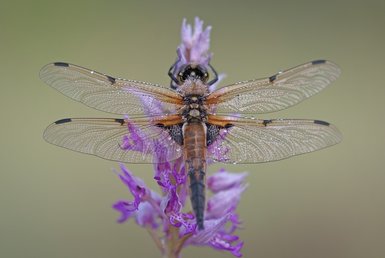

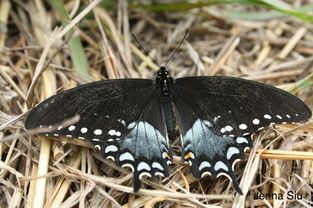
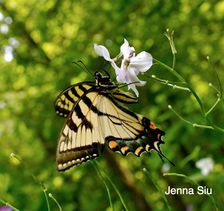
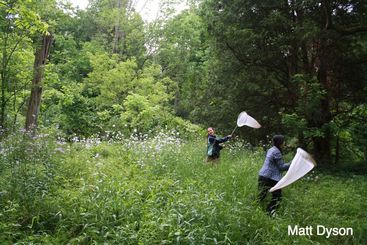
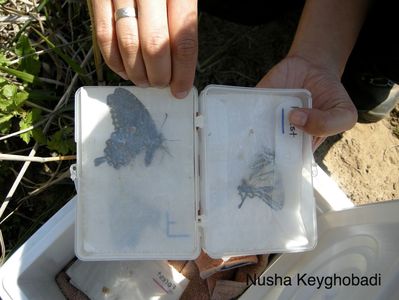
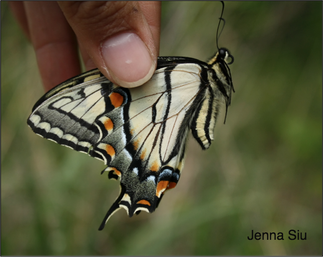
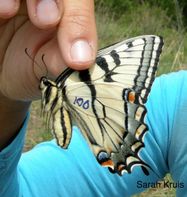
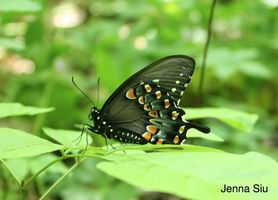

 RSS Feed
RSS Feed